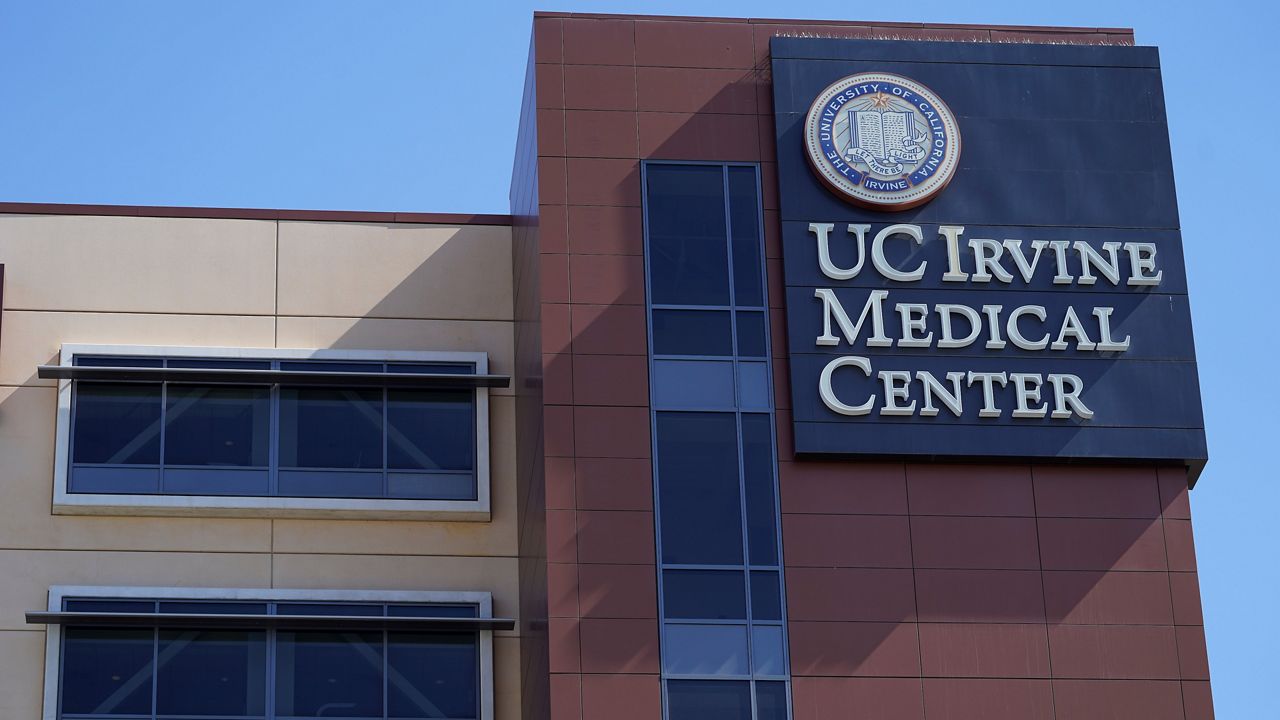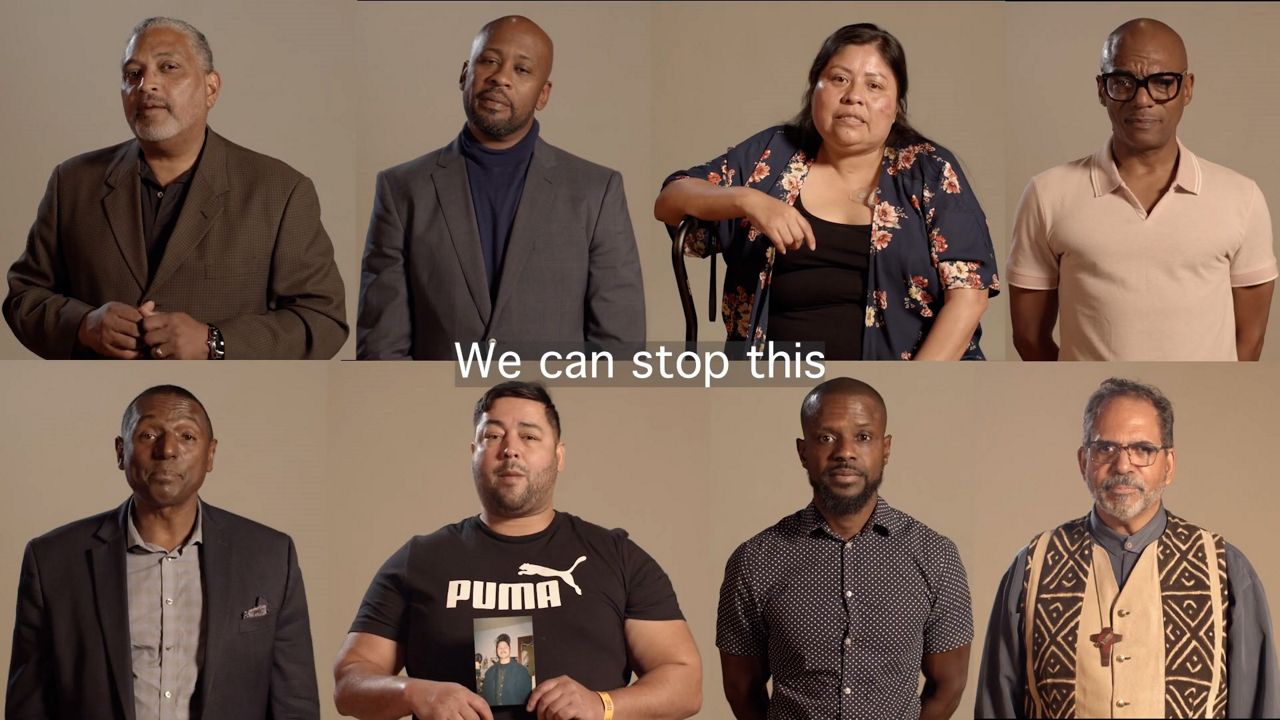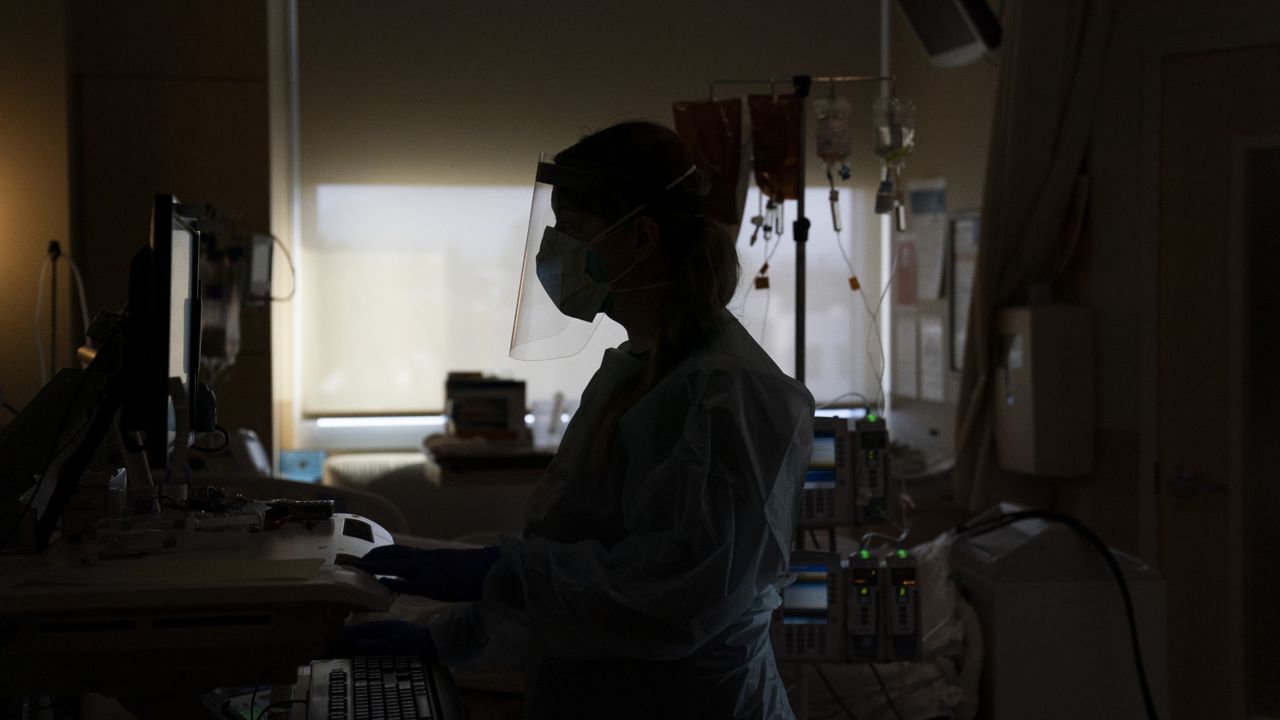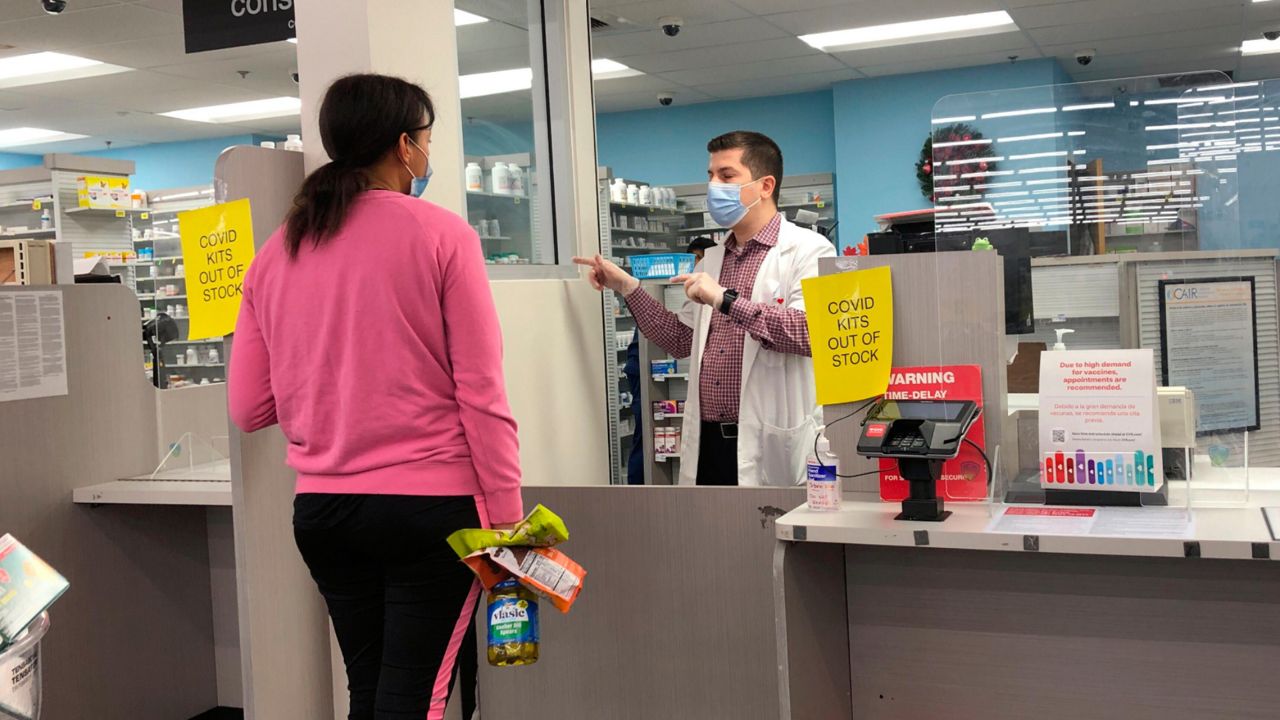SOUTH LOS ANGELES — The current spike in COVID-19 is hitting levels that have experts alarmed, reaching more than 3,000 new cases reported Monday alone in Los Angeles County. The concerning influx is pushing many community groups to implement new strategies to reach unvaccinated residents.
As she walked home to drop off groceries from a food bank, Ueemaee Russell says she finally feels like things are looking up for her. She just started working as a janitor. It's a new job she was able to secure thanks to an organization that’s been working to get Russell on her feet for more than 20 years.
"They is the best people. Shields for Families is the best people in the world," Russell said.
She’s emotional because it’s been a long road. Shields for Families offers services to people like Russell every day, but she’s needed a lot of assistance, including help with housing, drug rehab and mental health treatment.
Along the way, Russell says she has built a strong relationship with her case worker, Charlotte Mims, and because of that, she decided today it’s time she finally gets her COVID-19 vaccine.
"It begins with me and it ends with me and I know Charlotte Mims is here to help me at Shields for Families. So I tracked over here," Russell said.
Shields for Families offered amusement park tickets and cash incentives to encourage Russell and anyone else stopping by their weekly food bank to also get the shot while they’re grabbing groceries.
Charlotte Mims says this is a place where anyone can come for any need, which is why they chose to set up a COVID-19 vaccine clinic here, too.
"It’s a one stop shop, basicall, for whatever your need is. We’re addressing every area of their lives," Mims said.
But it’s been a challenge. In three hours, only 11 people coming to the food bank agreed to get a vaccine, despite those close knit relationships.
Director of Child Welfare Services Danita Henderson says the trust they’ve built helps, but she believes it’s going to take a lot more than community outreach to attack the issue of low vaccination rates in Black and brown communities as a whole.
"There’s so much history in this country of us being mistreated on so many levels. We are represented disproportionately in almost every system there is. So I think it’s gonna be a very difficult task to help break down some of those barriers," Henderson said.
Barriers that even Henderson faced when she was vaccine hesitant. For months, she found it difficult to encourage these clients to get vaccinated when she couldn’t even bring herself to.
Eventually she decided she was too embedded in the community not to get the vaccine and now it’s a decision she’s hoping they can at least influence with education, going door to door with St. Johns medical staff to residents in South Los Angeles.
Between 30 years in the community for Shields for Families and 50 years for St. Johns, they're expecting that community connection to be the difference between vaccinating just a handful of clients and vaccinating hundreds.
After all, it is the connection that brought Russell here.
“I will come back for the second one. They were very kind to me," she said.
With delta variant cases high and vaccination rates exceptionally low, every shot counts.
According the Department of Public Health, the Black community still holds the lowest rate of vaccination at 47% with one dose as of August 3, followed by the LatinX community, of which 57% have received a single-dose of the vaccine.











